wWelcome back to our NewsFile segment, our round-up of newsy tidbits and happenings from the world of contemporary ceramic art and contemporary ceramics. Is this edition, we delve into a well known, but rarely acknowledged truth, in the actualization of art as well as a bid farewell to a ceramist who helped bridge the gap between art and industry.
Del Harrow’s Tile Wall Installation
Before reading: Play this song.
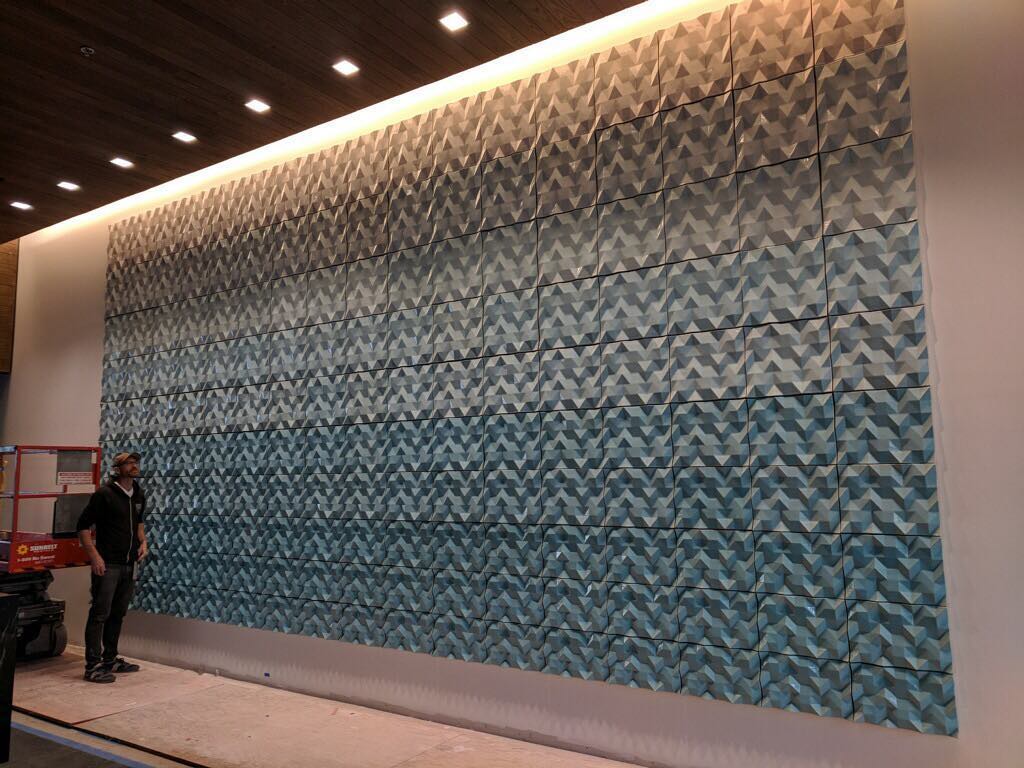
Known for his Mapplethorpe-inspired ceramics and winding, cavernous sculptures, this wall installation at Woodside Village Apartment Building in Kansas City, Missouri by Fort Collins-based artist Del Harrow piqued our interest as it’s nothing like his the rest of his oeuvre. We reached out to the artist about the piece, which he says is a reiteration of a large tile installation he made seven years ago for the Overthrown exhibition at the Denver Art Museum.
This piece uses similar ideas but also started entirely from scratch in terms of the computer models molds and tiles.
The larger concept is basically about a particular aesthetic: patterning and materiality of a large tile wall which draws both from (medieval) Islamic tile work and also incorporates the potential of digital and algorithmic modeling to create a gradient, a geometry more typical of biological systems.
The model began with a faceted surface overlayed over a wave form, but in a way that is slightly misaligned. This creates a kind of “interference pattern”, or patterning that emerges in a somewhat unpredictable way by overlaying two repetitive patterns. Music is a reference in a lot of my work and I’m interested specifically in the way complexity can arise from the combination of two fairly simple rhythms or elements. Even more specifically I listen to the band “Dawn of Midi” a lot in my studio. If this tile piece had a soundtrack, that would be it.
From that underlying pattern I introduced a second geometry: a gradient that runs through the piece from top to bottom. This gradient is present in three ways: the tiles get taller as they move from bottom to top, the relief becomes more shallow, and the color of the glaze transitions from turquoise to white. In all three of these the gradient is not linear but logorithmic – a feature of many gradients in biological systems.
After modeling the geometry in the computer the piece moved on to physical fabrication. The way this piece was made physically is also an important part of the aesthetic and content. I’ve been really interested lately in developing production systems that combine digital, mechanical, and analog fabrication. There is an inherent tension between these systems: the digital is really fast, while material is heavy and slow. The rigidity and repetition of mechanical systems contrasts the responsiveness, sensitivity, but also errors of the body. Pushing the scale of this piece – it’s a lot of parts, and a lot of clay, and was also made in in about 3 months, a very short period of time for a clay piece at this scale – tended to push these tensions into the foreground and affected the aesthetic. In the end I was interested in using the molds and and technology to create a certain level of order and combining this with a very analog way of making – pressing clay by hand. This hand pressing and glazing process introduced subtle variations and anomolies into the final piece in a way that makes it “warmer” more connected to the pace and variation of a human maker.
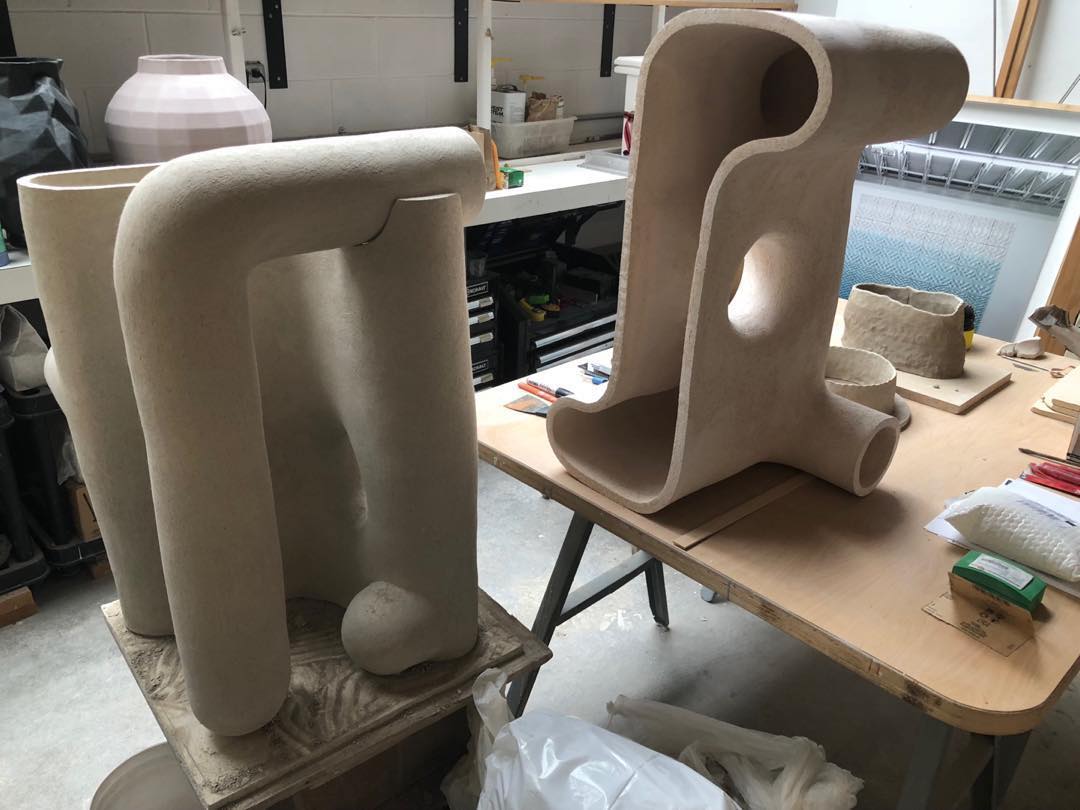
Harrow tells us his gallery is currently working on a video about the project and professionally photographed, which we’ll be sure to highlight upon completion.
Communion of Ceramics, Architecture + the Sacred
The Order of St Augustine reports it has undergone a national RIBA award-winning refurbishment of its church in Hammersmith––the first phase in redeveloping its headquarters. Parish priest and artist, Fr Gianni Notarianni O.S.A. commissioned Roz Barr Architects alongside artist Julian Stair, who was charged with redesigning the altar, and typographer John Morgan, to imbue the building with a calm, ethereal quality fitting for a sacred space.
The church was open to the public during London Design Festival (September 15 – 23, 2018).
Global Day of Clay
October 10, 2018 marks #GlobalDayofClay, a worldwide celebration of ceramics in all its forms, connecting institutions, professional ceramists, artists, academics and ceramophiles with new ideas, innovations, and works that are shaping the modality.
Check out events happening online and across the globe here.
Farewell Janice Tchelenko
Admired ceramist, designer and artist, Janice Tchelenko, who bridged the gap between art and large-scale production, passed away this August at the age of 76, the Guardian reports. Trained as a studio potter in the late 1960s, she produced hand thrown tableware in the ‘Bernard Leach’ tradition, which was followed by her new bold shapes and rich glazes.
But her work was, in tune with her socialist politics, to reach a wider audience from 1983 in collaboration with Steven Course at the Dartington Training Workshop, renamed Dart Pottery in 1984. Her tableware ranges for Dart, Poppy, Black Rose and Leopard, were an instant success, winning both the Manchester Prize for Art in Production and the BBC Radio 4 Enterprise Award in 1988. Production at Dart, initially hand-thrown, became more mechanised as demand soared. Decoration was always hand-painted using techniques evolved by Tchalenko.
She went on to design furnishing textiles and ceramics for Tricia Guild at Designers Guild in 1985, a range of ceramics for Next Interiors in 1986 and tableware for Poole Pottery in 1994-95. Until 2006 she continued to work with Poole, creating designs for the John Lewis Partnership, and more recently she launched a collection for Royal Stafford.
Read the Guardian‘s full obituary here.
Ai Weiwei’s Studio Demolished
Early this August, Chinese authorities demolished dissident artist Ai Weiwei’s Beijing-based studio without warning damaging some of the artist’s work. The artist turned to Instagram to document the incident:
“Works were damaged due to the unannounced attack on the studio. There was no caution taken. However, compared to the memories which have been lost, compared to a society which has never established trust in the social order, a trust in the rule of law, or a trust in any kind of unity in defending the rights of its people, what has been lost at my studio is insignificant, and I don’t even care. There are profoundly deeper and wider ruins in this deteriorating society where the human condition has never been respected.”
The BBC, citing AFP news agency, added that the rental contract for the building had ended last year, but that it “simply wasn’t possible” to move out at the time because of the amount of works still present.
Read NPR‘s full report here.
Art’s Dirty Little Secret
The romanticized image of the solitary artist is dead. And perhaps, it’s not so much a dirty secret as an attention grabbing headline. The truth of the matter is, as the New York Times reports, as artists’ projects grow more and more grand, there are unsung heroes who help manifest the artist’s vision: fabricators.
Sculpture and assemblage have grown to immense proportions in recent years as the art business itself has ballooned. As new techniques, materials and computer-assisted design make otherworldly shapes and surfaces possible, it’s become increasingly hard to ignore the man behind the curtain: the off-site fabricators who actually make the thing itself, whether it’s a hulking metal totem by Ellsworth Kelly or a Minimalist cube by Robert Morris.
“They are the invisible hands who build sculptures and installations for which someone else gets the credit,” The Independent reports adding that artists not only seek fabricators for their time and labor in their areas of expertise such as metalwork, electrical, woodwork and more, but for their consultation and collaboration.
But regardless of how much of his input is required, the boundaries of that working relationship are clear: “The work belongs to them. The finished piece is still a result of their decisions, even those based on my suggestions.”
Read more from the Times and the Independent.
Stay tuned throughout the week as we continue to update our NewsFile with the latest happenings from the world of contemporary ceramic art and contemporary ceramics. Love or loathe this? You know what to do in the comments section.
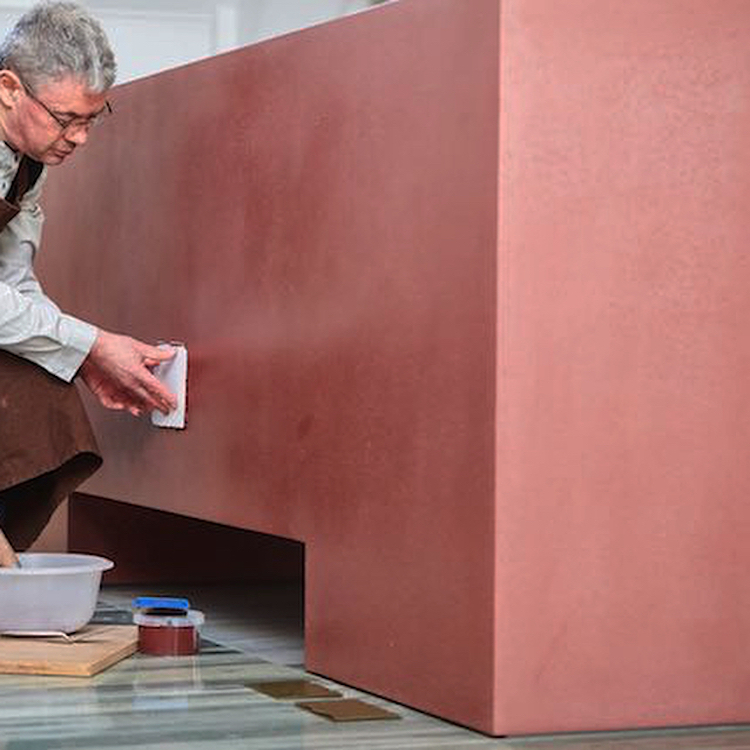
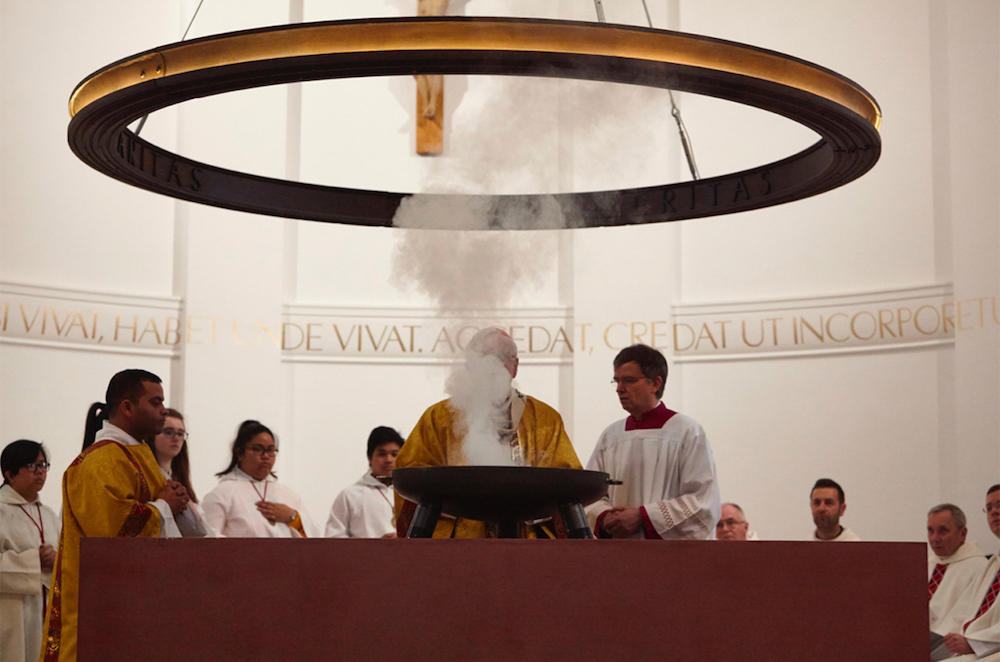
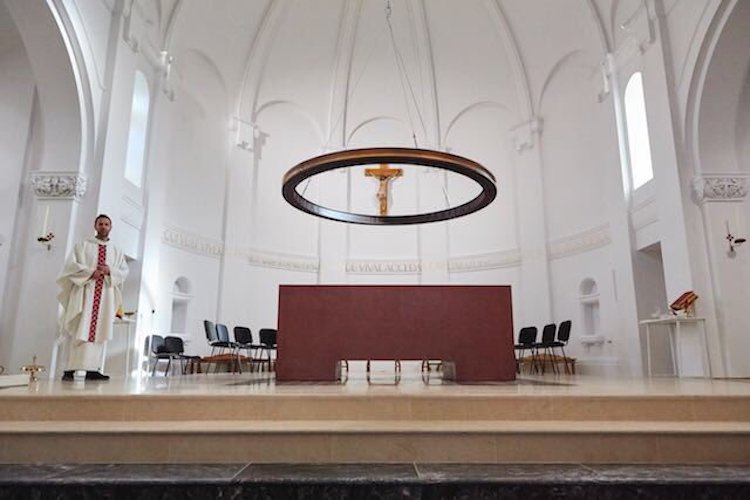


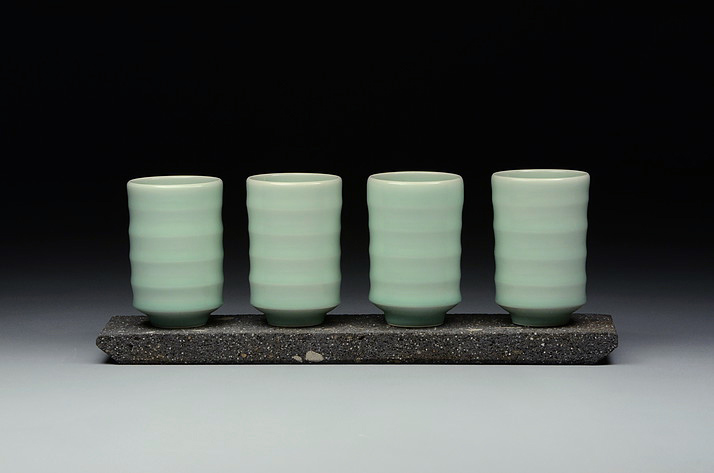
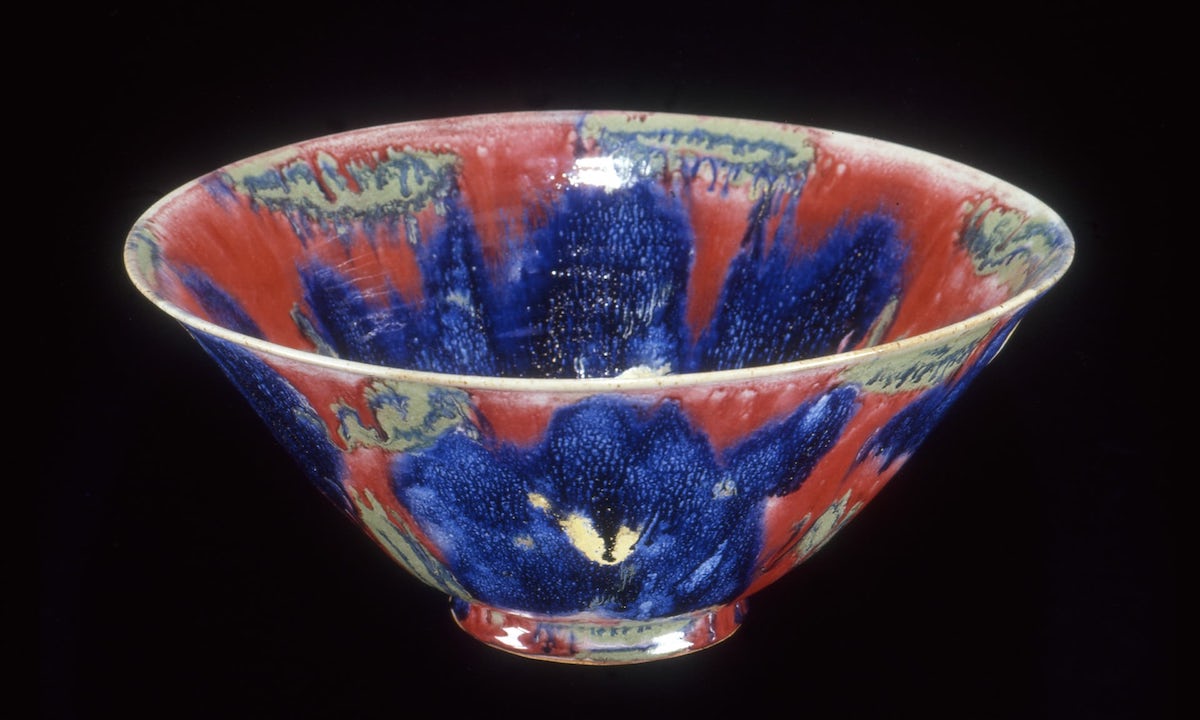
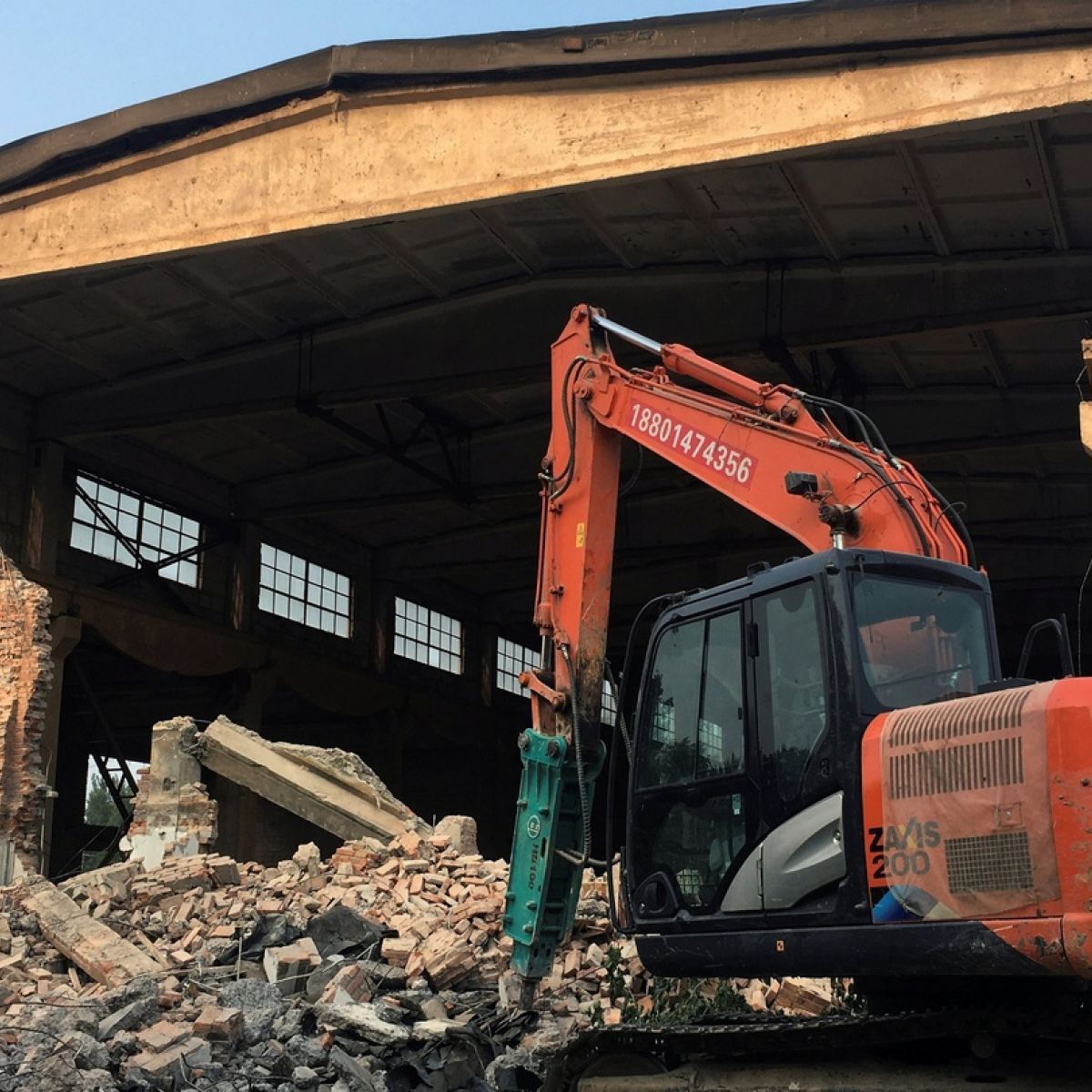

Could you say a word about where the Del Harrow piece is installed?
Hi Jonathan,
I somehow missed this post entirely until a couple days ago.
The piece is permanently installed in Kansas City. MO at the Woodside Village apartments.
The project was organized by Haw Contemporary Gallery. Here is a link to a nice little video KT Krug at Haw made about the piece: https://www.youtube.com/watch?v=0ngAdcG2zOQ